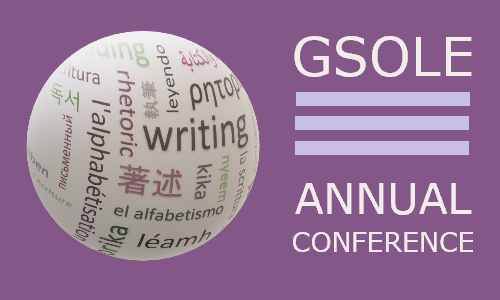- Home
- Programs
- 2026 GSOLE Annual Online Conference
- Conference On-Demand Presentation Guidelines
On-Demand Presentation GuidelinesThe information below reflects the guidelines for the most recent conference and is provided now for reference. These guidelines may be updated for the next conference. |
What Are On-Demand Presentions?GSOLE On-Demand Presentations are brief videos used to share teaching practices, research, and philosophy related to OWI and OLI. What follows are the three categories of On-Demand Presentations:
See below for guidelines and tips for preparing your On-Demand video for the upcoming conference. |
How On-Demand Options Fit into the Conference |
Pre-conference PreviewsA week prior to the day of the synchronous online conference, conference participants will be invited to visit our On-Demand Presentation Hall, which will consist of links to GSOLE-hosted pages that include asynchronous presentations as embedded videos. The pages will also allow for asynchronous commentary on the presentations. Live Q & A SessionsDuring the live virtual conference, On-Demand presenters have the opportunity to participate in a synchronous video-conferenced panel including three or more fellow presenters. Presenters will be given five minutes each to briefly introduce themselves and their presentation and to offer remarks that engage the audience about their presentation, which audience members are presumed to have already viewed. These remarks might take any of the follow forms:
We hope these remarks and the presentations themselves will lead to a robust conversation. |
Presenter Responsibilities and Rights
|
Preparing the PresentationChoosing a Development PlatformA variety of tools can be used to create and share videos online, including many common slide-based composition tools. In some cases, more than one tool must be used to complete all the necessary steps. In all cases, you will need to provide GSOLE a link to your presentation that will be accessible to view for anyone who has access to the link. Pre-Recorded Presentations: We welcome pre-recorded interactive presentations using digital tools like PlayPosit, Nearpod, and VoiceThread, to engage the audience in active learning as they watch your session. Praxis Post(er)s: A Praxis Post(er) is a video presentation demonstrating a particular teaching practice or assignment in the virtual classroom or during online tutoring sessions. ePortfolio Gallery Submissions: With attempts to spotlight voices and stories in OLI, this submission type invites educators with professional electronic websites to share video tours of their sites with the GSOLE community. Individuals who completed ePortfolio sites as part of the GSOLE certification program are especially encouraged to apply. Depending on interest, GSOLE will host workshops and distribute resources assisting presenters in building these asynchronous presentations. Consultations are also available upon request. Please note the 5- to 10-minute length requirement on these formats, which is an important feature of presentation accessibility. Here are some other possible platforms:
Designing the PresentationA micro-presentation like this doesn’t allow much time to support big claims or demonstrate intricate processes. But that doesn’t mean presenters can’t discuss sophisticated OLI concepts and practices. The key is to remember that the presentation is just the start of a discussion about OLI issues or innovative teaching and administrative practices.
Other Production ConsiderationsHere are a couple of other considerations to ensure that your presentation will both meet the guidelines above and be accessible to viewers.
|

